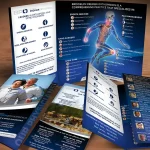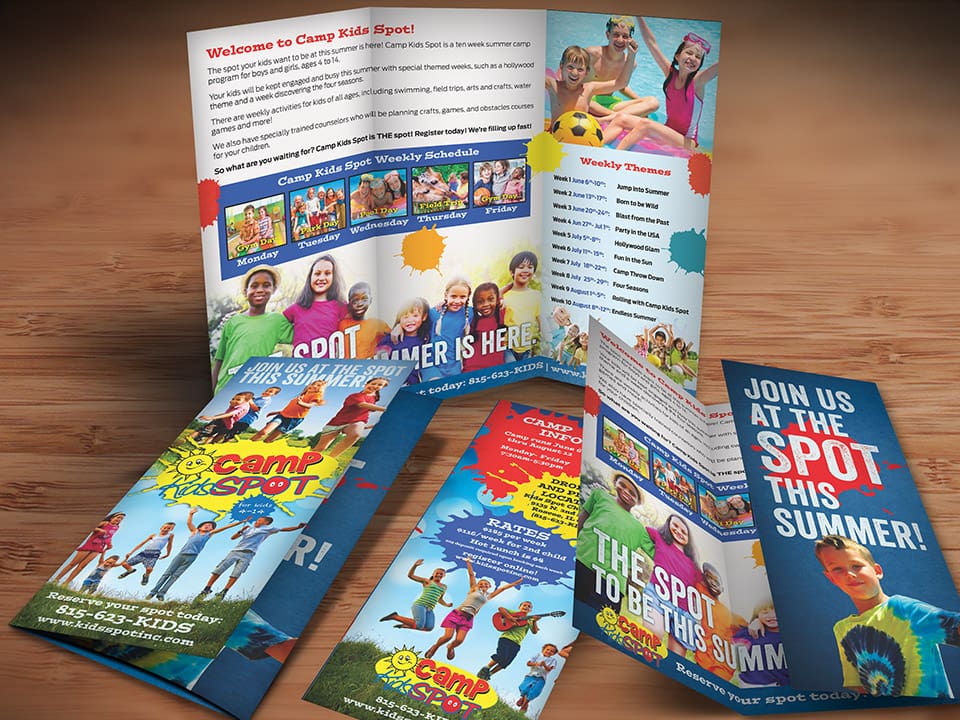Website design plays a crucial role in the success of any online business or brand. A well-designed website not only attracts visitors but also keeps them engaged and encourages them to take desired actions. In today’s digital age, where attention spans are shorter than ever, it is essential to create a visually appealing and user-friendly website that stands out from the competition.
In this blog post, we will explore various aspects of website design and how they can be used to create a memorable and effective online presence. We will delve into the concepts of perplexity and burstiness, which are key elements in designing a website that captures attention and keeps users engaged.
Key Takeaways
- Visual storytelling can engage and captivate website visitors, making them more likely to stay on the site and take action.
- Color psychology can be used to evoke emotions and create a memorable brand identity on a website.
- User experience is crucial in website design, as it can impact how users perceive and interact with the site.
- Typography plays a key role in creating a strong brand identity and can enhance the overall aesthetic of a website.
- Animation and video can add visual interest and help convey information in a dynamic way on a website.
- Minimalist design can improve website usability and make it easier for users to navigate and find what they need.
- Mobile responsiveness is essential in website design, as more and more users access websites on their mobile devices.
- Navigation is a critical component of user-friendly website design, as it can impact how easily users can find information on the site.
- Custom illustrations can add a unique and personal touch to a website, helping to differentiate it from competitors.
- Keeping up with website design trends is important for staying relevant and meeting the evolving needs of users.
The Power of Visual Storytelling in Website Design
Visual storytelling is the art of conveying a message or telling a story through visual elements such as images, videos, and animations. It is a powerful tool that can evoke emotions, create connections, and leave a lasting impression on users.
Many websites effectively use visual storytelling to engage their audience and communicate their brand message. For example, Airbnb’s website uses stunning images of unique accommodations around the world to inspire users to book their next adventure. The images are accompanied by compelling captions that tell the story of each location, creating a sense of wanderlust and excitement.
Visual storytelling enhances user experience by making the website more engaging and memorable. It allows users to connect with the brand on an emotional level and creates a sense of authenticity. By incorporating visual elements that align with the brand’s values and identity, website designers can create a cohesive and impactful user experience.
How to Use Color Psychology to Create a Memorable Website
Color psychology is the study of how colors affect human behavior and emotions. Different colors evoke different feelings and can influence how users perceive a website or brand.
Websites that effectively use color psychology can create a memorable and impactful experience for users. For example, Coca-Cola’s website uses the brand’s signature red color to evoke feelings of excitement, energy, and happiness. The use of red throughout the website creates a strong association with the brand and reinforces its messaging.
When choosing colors for a website, it is important to consider the target audience and the desired emotional response. Warm colors like red, orange, and yellow are often associated with energy and excitement, while cool colors like blue and green evoke feelings of calmness and trust. It is also important to consider the contrast between different colors to ensure readability and accessibility.
The Importance of User Experience in Website Design
User experience (UX) refers to the overall experience that a user has when interacting with a website or application. It encompasses factors such as ease of use, navigation, responsiveness, and visual appeal.
A good user experience is crucial for the success of a website. It can lead to increased engagement, higher conversion rates, and improved customer satisfaction. On the other hand, a poor user experience can result in high bounce rates, low conversion rates, and negative brand perception.
Websites with good user experience are intuitive and easy to navigate. They provide clear and concise information, have fast loading times, and are optimized for different devices and screen sizes. Examples of websites with good user experience include Apple’s website, which is known for its clean design and seamless navigation, and Amazon’s website, which offers a personalized and user-friendly shopping experience.
Conversely, websites with bad user experience often have confusing navigation, slow loading times, and cluttered layouts. These websites frustrate users and make it difficult for them to find the information they need. Examples of websites with bad user experience include those that have excessive pop-up ads, intrusive autoplay videos, or confusing menu structures.
The Role of Typography in Creating a Strong Brand Identity
Typography refers to the style, arrangement, and appearance of text on a website. It plays a crucial role in creating a strong brand identity and conveying the brand’s personality and values.
Websites with strong typography use fonts that are consistent with the brand’s identity and messaging. For example, luxury brands often use elegant and sophisticated fonts to convey a sense of exclusivity and refinement. On the other hand, playful and whimsical fonts are often used by brands targeting a younger audience.
When choosing typography for a website, it is important to consider factors such as readability, legibility, and accessibility. Fonts should be easy to read on different devices and screen sizes, and there should be enough contrast between the text and the background to ensure readability. It is also important to use a limited number of fonts to maintain consistency and avoid visual clutter.
How to Use Animation and Video to Enhance Website Design
Animation and video are powerful tools that can enhance website design by adding movement, interactivity, and storytelling elements.
Animation can be used to draw attention to important elements on a website, create visual interest, and guide users through the content. For example, websites often use animated sliders or carousels to showcase products or highlight key features. Animation can also be used to provide feedback or indicate user actions, such as when a button is clicked or a form is submitted.
Video is another effective way to engage users and communicate complex information in a concise and engaging manner. Websites can use videos to tell stories, demonstrate products or services, or provide tutorials. For example, fitness brands often use videos to showcase workout routines or provide tips on healthy living.
When incorporating animation and video into a website, it is important to consider factors such as loading times, file sizes, and compatibility with different devices and browsers. It is also important to use animation and video sparingly and purposefully, as excessive use can lead to slow loading times and distract users from the main content.
The Benefits of Minimalist Design for Websites
Minimalist design is a design approach that focuses on simplicity, clarity, and functionality. It eliminates unnecessary elements and visual clutter, resulting in a clean and streamlined aesthetic.
Websites with minimalist design are visually appealing and easy to navigate. They provide a clear and focused user experience, allowing users to quickly find the information they need. Minimalist design also allows the content to take center stage, making it easier for users to digest and understand.
Examples of websites with minimalist design include Google’s homepage, which features a simple search bar and logo, and Apple’s website, which uses clean lines, ample white space, and minimal text. These websites prioritize functionality and usability over unnecessary visual elements.
The benefits of minimalist design extend beyond aesthetics. Minimalist websites often have faster loading times, improved mobile responsiveness, and better accessibility. They also tend to have higher conversion rates and lower bounce rates, as users are more likely to stay engaged and take desired actions.
The Impact of Mobile Responsiveness on Website Design
Mobile responsiveness refers to the ability of a website to adapt and display properly on different devices and screen sizes. With the increasing use of smartphones and tablets, it is essential for websites to be mobile-responsive in order to provide a seamless user experience.
Websites that are not mobile-responsive can be difficult to navigate on smaller screens, resulting in a poor user experience. Users may have to zoom in or scroll horizontally to view content, which can be frustrating and time-consuming. In addition, non-responsive websites may have slow loading times on mobile devices, leading to high bounce rates.
On the other hand, websites that are mobile-responsive provide a consistent and optimized experience across different devices. They automatically adjust the layout, font sizes, and images to fit the screen size, ensuring that users can easily access and interact with the content. Examples of websites with good mobile responsiveness include Airbnb’s website, which provides a seamless booking experience on both desktop and mobile devices, and Starbucks’ website, which allows users to easily find nearby stores and place orders from their smartphones.
When designing a mobile-responsive website, it is important to consider factors such as touch-friendly buttons, legible text, and optimized images. It is also important to test the website on different devices and screen sizes to ensure that it displays properly and functions as intended.
The Role of Navigation in User-Friendly Website Design
Navigation refers to the menu structure and organization of a website, which allows users to easily find and access different pages or sections.
Good navigation is crucial for creating a user-friendly website. It helps users quickly find the information they need and navigate through the content without getting lost or confused. On the other hand, bad navigation can frustrate users and make it difficult for them to accomplish their goals.
Websites with good navigation have clear and intuitive menu structures. They use descriptive labels and logical hierarchies to guide users through the content. For example, e-commerce websites often have a main navigation menu that includes categories such as “Men,” “Women,” “Kids,” and “Sale,” allowing users to easily browse and shop for products.
Conversely, websites with bad navigation often have confusing menu structures, hidden links, or broken navigation elements. These websites make it difficult for users to find what they are looking for and can result in high bounce rates. Examples of websites with bad navigation include those that have excessive drop-down menus, inconsistent labeling, or non-intuitive search functions.
When designing user-friendly navigation, it is important to consider factors such as simplicity, consistency, and accessibility. The menu structure should be easy to understand and navigate, and there should be clear visual cues to indicate the user’s current location within the website. It is also important to optimize the navigation for different devices and screen sizes, ensuring that it is easy to use on both desktop and mobile devices.
The Benefits of Custom Illustrations in Website Design
Custom illustrations are unique and original visual elements that are created specifically for a website or brand. They can add personality, creativity, and a sense of authenticity to a website.
Websites that incorporate custom illustrations stand out from the competition and create a memorable user experience. Custom illustrations can be used to convey complex ideas or concepts in a simple and engaging manner. They can also be used to create a cohesive and consistent visual identity that aligns with the brand’s values and messaging.
Examples of websites with custom illustrations include MailChimp’s website, which uses playful and whimsical illustrations to explain its email marketing services, and Dropbox’s website, which uses simple and clean illustrations to demonstrate its file storage and sharing capabilities.
When incorporating custom illustrations into a website, it is important to consider factors such as style, color palette, and consistency. The illustrations should align with the brand’s identity and messaging, and they should be used purposefully to enhance the user experience. It is also important to optimize the file sizes of the illustrations to ensure fast loading times.
The Future of Website Design: Trends to Watch Out For
Website design is constantly evolving, with new trends and technologies emerging all the time. Staying up-to-date with these trends is essential for creating modern and engaging websites.
Some upcoming website design trends to watch out for include:
1. Dark mode: Dark mode is a design trend that uses dark backgrounds and light text to reduce eye strain and improve readability. Many websites and applications now offer a dark mode option, allowing users to switch between light and dark themes.
2. Microinteractions: Microinteractions are small animations or visual cues that provide feedback or indicate user actions. They can enhance the user experience by making interactions more engaging and intuitive.
3. Voice user interface (VUI): With the increasing popularity of voice assistants like Siri and Alexa, voice user interfaces are becoming more prevalent in website design. Websites can incorporate voice commands and responses to provide a hands-free and convenient user experience.
4. Augmented reality (AR): Augmented reality is a technology that overlays digital information or virtual objects onto the real world. Websites can use AR to provide interactive and immersive experiences, such as virtual try-on for clothing or furniture.
To stay up-to-date with website design trends, it is important to follow industry blogs and publications, attend conferences and webinars, and network with other professionals in the field. It is also important to continuously learn and experiment with new tools and technologies to stay ahead of the competition.
In conclusion, website design plays a crucial role in creating a memorable and effective online presence. By incorporating elements such as visual storytelling, color psychology, user experience, typography, animation and video, minimalist design, mobile responsiveness, navigation, custom illustrations, and staying up-to-date with trends, website designers can create engaging and impactful websites that attract and retain users.
It is important for businesses and brands to invest in professional website design to ensure that their online presence reflects their values and messaging. By implementing the tips and strategies outlined in this blog post, businesses can create websites that stand out from the competition and provide a seamless user experience.
So, whether you are starting a new business or looking to revamp your existing website, take the time to carefully consider each aspect of website design and how it can contribute to your overall brand identity and user experience. Remember that a well-designed website is not only visually appealing but also functional, intuitive, and optimized for different devices and screen sizes.
If you’re looking for inspiration and guidance on creating great website designs, you should definitely check out Bracha Designs. They offer a range of services, including web design and website hosting. Their expertise in website design is evident in their work, as showcased in their article on website design in Melville. This article provides valuable insights into the process of designing a website that not only looks visually appealing but also functions seamlessly. To learn more about their services and explore their impressive portfolio, visit Bracha Designs’ website at https://brachadesigns.com/website-design-in-melville/.
FAQs
What is a great website design?
A great website design is a visually appealing and user-friendly website that effectively communicates the brand’s message and provides a seamless user experience.
What are the key elements of a great website design?
The key elements of a great website design include a clear and concise layout, easy navigation, fast loading speed, responsive design, high-quality images and graphics, and consistent branding.
Why is a great website design important?
A great website design is important because it can attract and retain visitors, increase engagement and conversions, improve search engine rankings, and enhance the overall credibility and reputation of a brand.
What are some examples of great website designs?
Some examples of great website designs include Apple, Airbnb, Dropbox, Nike, and Spotify. These websites have a clean and modern design, easy navigation, and consistent branding.
How can I create a great website design?
To create a great website design, you should start by defining your brand’s message and target audience. Then, you can choose a design style that aligns with your brand and create a clear and concise layout with easy navigation. It’s also important to optimize your website for speed and mobile devices and use high-quality images and graphics.















0 Comments